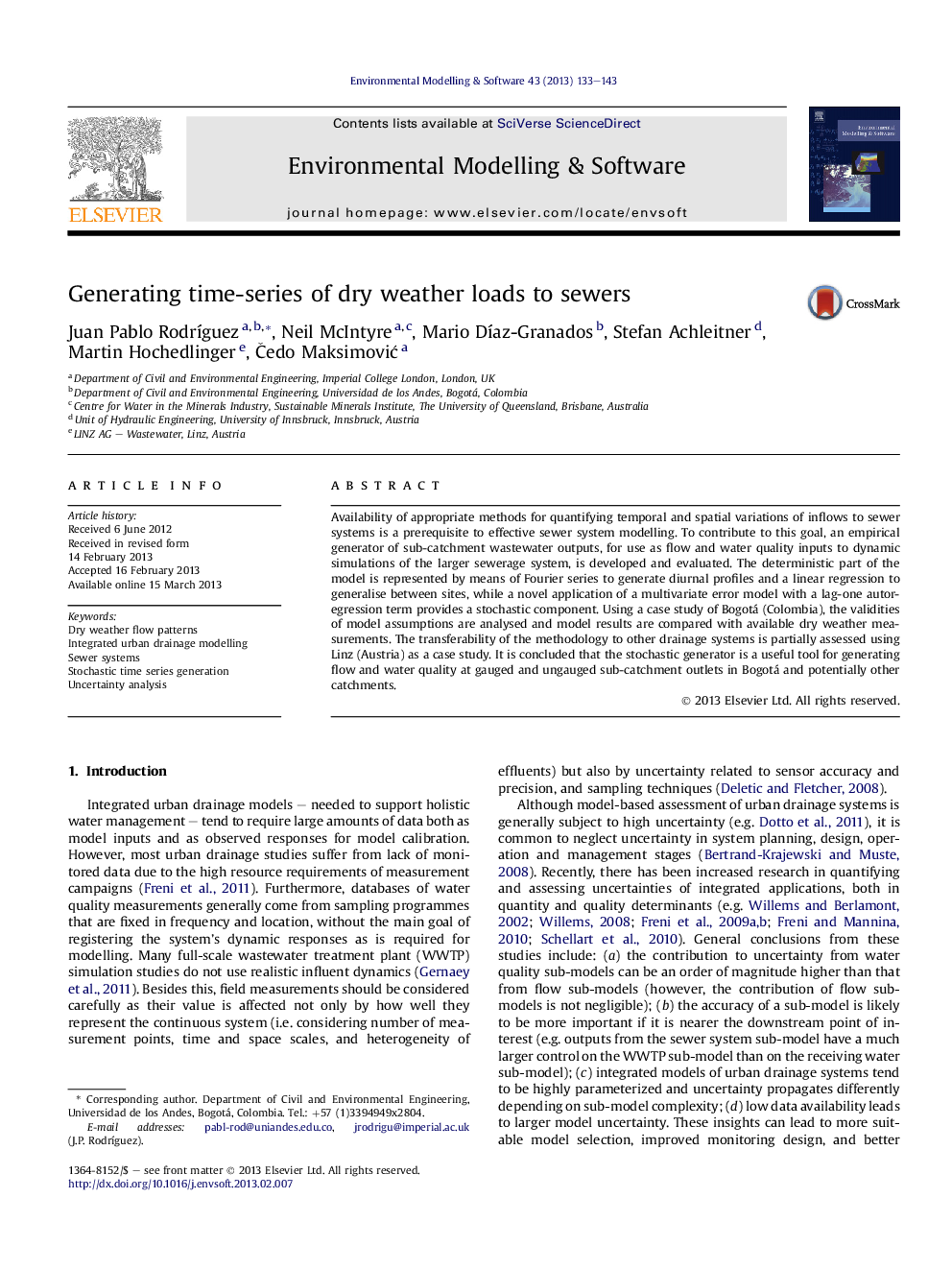| کد مقاله | کد نشریه | سال انتشار | مقاله انگلیسی | نسخه تمام متن |
|---|---|---|---|---|
| 570227 | 1452307 | 2013 | 11 صفحه PDF | دانلود رایگان |

Availability of appropriate methods for quantifying temporal and spatial variations of inflows to sewer systems is a prerequisite to effective sewer system modelling. To contribute to this goal, an empirical generator of sub-catchment wastewater outputs, for use as flow and water quality inputs to dynamic simulations of the larger sewerage system, is developed and evaluated. The deterministic part of the model is represented by means of Fourier series to generate diurnal profiles and a linear regression to generalise between sites, while a novel application of a multivariate error model with a lag-one autoregression term provides a stochastic component. Using a case study of Bogotá (Colombia), the validities of model assumptions are analysed and model results are compared with available dry weather measurements. The transferability of the methodology to other drainage systems is partially assessed using Linz (Austria) as a case study. It is concluded that the stochastic generator is a useful tool for generating flow and water quality at gauged and ungauged sub-catchment outlets in Bogotá and potentially other catchments.
► Development of a mixed deterministic-stochastic sub-catchment wastewater load model.
► Novel application of a multivariate error model with a lag-one autoregression term.
► Inclusion of the inter-determinant correlation structure.
► Capability to parsimoniously characterise ungauged urban sub-catchments.
► Model captures observed patterns and randomness of flows and loads.
Journal: Environmental Modelling & Software - Volume 43, May 2013, Pages 133–143